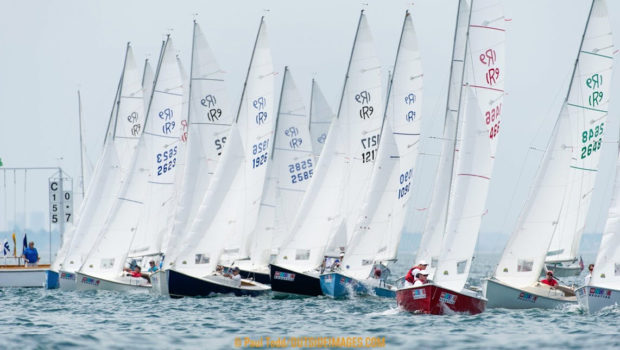Maximizing Opportunities for Social Connections
Published on October 5th, 2016
by Jim Taylor, Jim Taylor Yacht Designs
It is my experience that sailing succeeds when the social aspects of the activity succeed, at every level of the sport. It is no different for kids than it is for adults, and no different for high end competition than it is for low key recreation.
When sailors have opportunities to interact freely with other sailors (including their elders or their kids) on the water and off, they have that many more reasons to stick with, and to grow with, the sport. In Marblehead (USA), we are lucky enough to have two prime examples of this sailing social dynamic at work.
One is the Pleon Yacht Club, which at 129 years young and counting is the oldest junior sailing club in the country. While it has produced more than its share of world class sailors (Olympian Thomas Barrows is just the latest), the real key to its continued success is its unique ‘kids only’ culture.
Pleon’s officers are kids, its instructors are typically college kids, and even its program directors are young adults. Most important of all, parents are none too subtly ‘encouraged’ to make themselves scarce. The resulting kid focused chaos fosters shared experiences on the water and ashore that can stay with them for a lifetime, and keep them in the game as well.
A second local example is Fleet 5 of the Rhodes 19 Class, which has ‘only’ been going for 50 years or so, and that has never been stronger or more vibrant than it is now. Ex-college sailors are injecting a huge shot of energy into the fleet, rather than dropping out of the sport. There are multiple reasons for this: good boats are reasonably priced, college sailors are used to underpowered boats that all go the same speed, only two crew are required, and there is a copacetic ‘all ages’ social mix.
Like any racing fleet, Fleet 5 has a top group who expect to win trophies, a middle group who win one now and then, and the rest who seldom get a sniff but who keep playing the game anyway, and who are the most critical to the success of the fleet. The class does a good job of giving clinics where the top sailors help the rest raise their game, but it is the yearlong routine of multiple fleet parties that provides the social glue that keeps members of all levels interested and engaged.
Sharing some pot luck food and a drink (available via the travelling fleet bar) with a competitor in the evening can provide a quite different perspective on that leeward mark incident you shared last week. A number of classes have come and gone in Marblehead (the Sonars almost literally went overnight), in part because members of those fleets simply did not connect well with the people they were sailing against. The Rhodes 19 fleet continues to thrive because they do.
There are no formulaic answers to how successful sailing programs should be structured short term, nor to how the sport can keep sailors sailing long term. One of the unique charms of our sport/activity is that it can be enjoyed in so many different ways, on so many different levels, on so many different kinds of boats. The key is fully embracing all of this variety, and maximizing opportunities for social connections and interactions between the participants.









 We’ll keep your information safe.
We’ll keep your information safe.